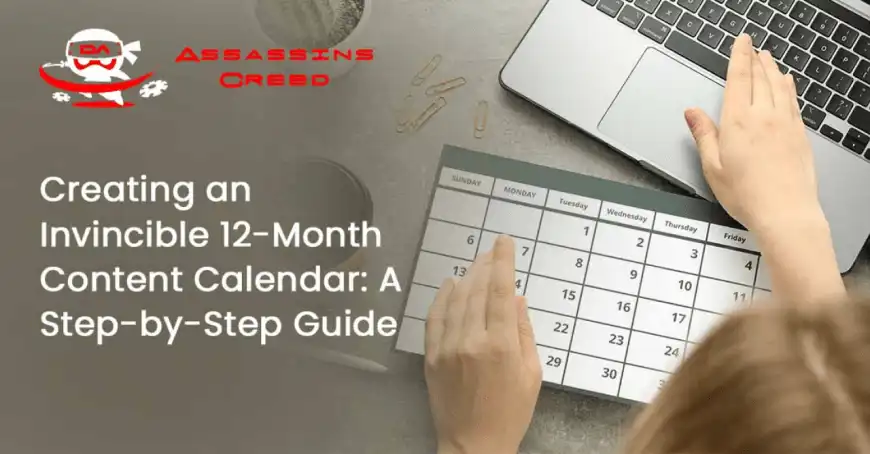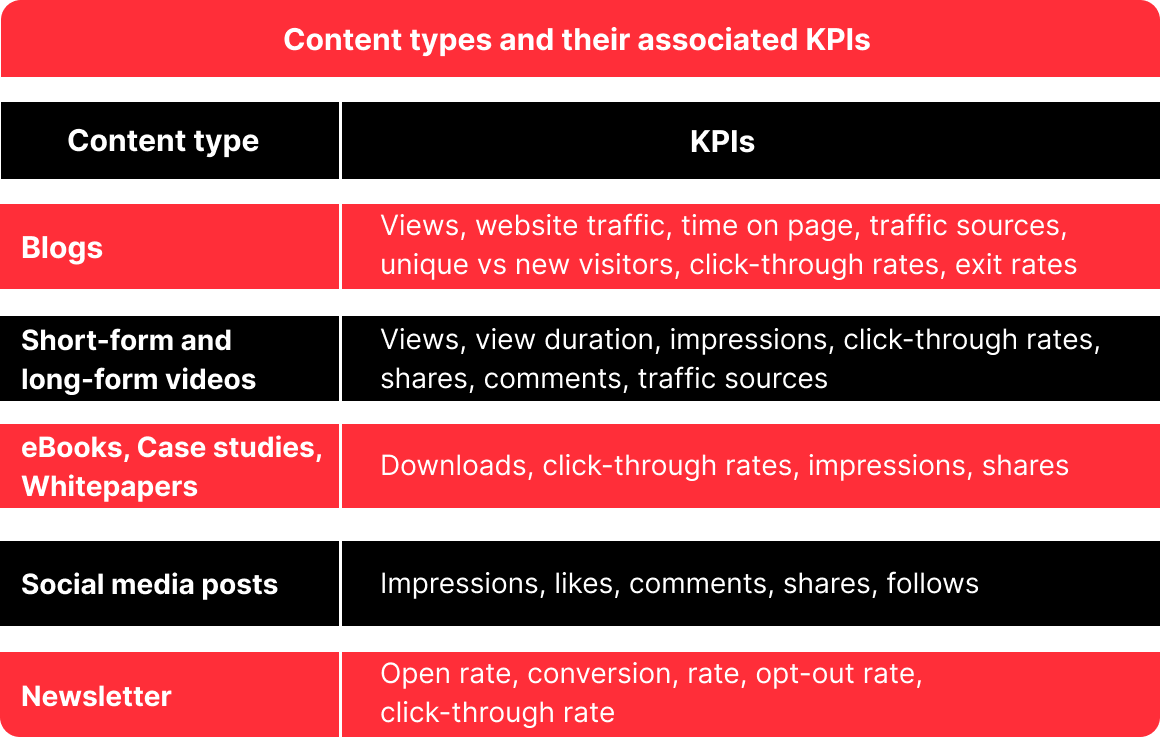- 30th April, 2024
- By Denise Choong
Creating an Invincible 12-Month Content Calendar: A Step-by-Step Guide

Crafting killer content is about answering this simple question: how can I diligently create interesting, relevant, and engaging content for my target audience?
Content marketing has long been a popular weapon for capturing the Australian market. In fact, 96% of marketers in the country rely on content marketing to get customers. But to be truly invisible, you’ll need to plan your content tactically.
In this blog post, we’ll show you the assassin’s way of organising your content with a content calendar that can effectively penetrate your desired target audience.
What is a content calendar?
A content calendar, sometimes known as a content planner, is a brand document with a schedule of your upcoming content. Marketing content exists in many forms (i.e. blog posts, YouTube videos, eBooks, Case Studies, White Papers), and a calendar organises all this information in an easy-to-view format.
Having a content calendar is highly recommended for any business with a marketing strategy. In addition to keeping you organised and on track with your content, it also ensures you’re disciplined and consistent in communicating with your target.
So how does one begin to explore content planning? Here’s our step-by-step intel.
How to Create a Content Calendar
Step 1: Knowing your audience
Who is your primary target audience that will be looking at your content?
This question should be your guide in your first step. If your content doesn’t speak to your customers, it’ll be ineffective and a waste of resources. So before you create your content, understand your target personas and develop your content with them in mind.
For example, if you’ve identified that your target audience is a female in her 30s who likes travelling, then the most suitable platform will be Instagram with a focus on Reels. However, a male CEO in his 50s would be better targeted through LinkedIn in a post or newsletter.
Many businesses can even have different target audiences who are active on different platforms. Knowing where they are and the type of content they consume can dictate your success or failure.
Step 2: Developing your content goals
Once you’ve identified your target audience, it’s time to set realistic and measurable goals. The assassin’s way is setting goals in a S.M.A.R.T format.
 Image Caption
Image Caption
Your content goals should always align with your company objectives to ensure complete synergy. For example, if your business goal is to increase leads on your website, crafting more informational blog content should be your mission objective.
Step 3: Using content types and platforms
Once you’ve identified your target’s content consumption behaviour and set your objectives, it’s time to determine your execution strategy. This means locking in the type of content you’ll develop and where you’ll publish it (otherwise known as your marketing platform).
Here are the typical types of content we normally use in target infiltration and their associated marketing platforms.

Videos should be the centrepiece of your content calendar. With 81% of audiences wanting to see more short-form videos from brands, it’s hard to ignore the power these videos have over your customers. Different platforms have different video rules, so we recommend developing a longer video and cutting it down for each platform according to its requirements.
Social media content calendars, meanwhile, can be easily developed using Google Sheets and scheduled in bulk using a social media content calendar like Sked Social or Loomy.
Step 4: Generating content ideas
Developing different content ideas can be a challenging quest for many businesses, as it requires a great deal of time and resources. One of the best ways to get started with content is to look internally at your processes—is there any part of your business you can leverage as content?
Maybe it’s filming a short ‘day-in-my-job’ video or a quick employee interview. Our assassin’s mantra has always been to create authentic content, so consider looking at your internal area of expertise and thinking about what you can teach your audience (e.g., funny stories, business lessons, industry insights).
Once you’ve developed an arsenal of content at your disposal, you can start looking at repurposing existing content into different formats. It could mean turning your blogs into infographics or changing a case study blog into a video.
Step 5: Developing your content calendar in advance
The purpose of a content calendar is to organise your content so you know what to expect each month, and this can only be achieved if you create it in advance. At a minimum, you should plan your content one month ahead of schedule, depending on the type of content.
To optimise your content, consider leveraging key dates and capturing the latest trends. If you’re operating a retail B2C business, you should be familiar with popular dates like Mother's Day, Father's Day, Cyber Weekend, Christmas, Easter, and other important holidays.
Businesses in specific industries should also know the key dates relevant to their industry. For example, if you run an optometry business, you might want to develop a content and promotional strategy for World Myopia Week.
Social media is the best way to weaponise trending content. So consider keeping your social media calendar flexible, which will allow you to post on trending topics when they appear. For example, Uber Eats leveraged the annual Spotify Wrapped music event, a yearly event in which customers share what music they listened to for the year, to create a funny post for its target audience.
Step 6: Analysing your calendar in advance
Analysing one's content is an underrated part of content planning. Knowing how your content performs gives you a tactical advantage by offering insights on the best content type and platform for your customers.
Realistically, creating content is a trial-and-error mission, and once you know which content performs best, you can use it to generate content that infiltrates your customers' minds. Some common metrics that marketers can use to measure their content performance are as follows:

While these marketing metrics are relevant for standard content, SEO content is a different beast that requires a separate content and measurement approach. We recommend reading our content marketing and SEO guide as your first mission.
Key takeaway
Creating a content calendar is a step-by-step approach that requires diligence, content acumen, and understanding of your target audience. But once you have mastered it, you can effectively optimise your content organisation and performance.
Digital Assassin’s digital marketing package involves developing a content calendar that includes blog posts, SEO-optimised YouTube videos, and case studies that help businesses infiltrate their customers. We work together with our partners' internal staff to ensure all content is made to produce targeted results.
To get started with improving your content marketing strategy with Digital Assassin, speak to an assassin today.

